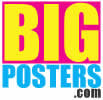File Preparation
File Preparation
If you are unsure of your file after reading this page, feel free to call us. We are happy to help you with any questions you may have.
Types of media that we accept: MAC & PC
CD, DVDs as well as emails & ftp file transfers
For PHOTOGRAPHERS
who wish to send in a photo as opposed to a digital file, please call for quotes on our scanning services. We offer drum scanning as well as large format poster scanning
APPLICATION SOFTWARE
Quark Xpress, Pagemaker, Illustrator, Freehand, Corel Draw, Photoshop, Photopaint, Publisher, Power Point, Picture It, Word, Visio and all other graphic and presentation programs. If your application of choice is not listed, please ask us if we can accept it (We always find a way to output your file!)
COLOR PRINTING
We can output from any application MAC & PC (if we do not have your application, we can always find a way to get the job done!) Before going into detail with all the different applications, let us discuss the major question everyone ask: What resolution do I need?
There are two types of computer artwork: Vector Images and Raster Images (and most of the time, both types are included in most applications)
Vector based programs
Illustrator, Corel Draw, Freehand, Canvas and some others are vector based programs (with the capability to add raster images) Vector artwork includes text, circles, boxes and any combination of curves that can construct many of those clipart pictures you import into your documents. Vector artwork can be scaled infinitely without any loss in detail. This is because all those curves, lines and text have a mathematical formula built into it, no matter how you stretch it and resize it, the output will always be smooth. Vector based artwork has no resolution and does not need any other intervention other than selecting the right colors in the cmyk palette.
Raster based Programs
Now on the other side of the coin, raster images have resolution and need a certain amount in order to produce quality output. Photoshop, Photopaint, Photodeluxe (and almost any program with the word photo, picture or paint in it) is imaging software.
When dealing with photos or artwork constructed in programs like Photoshop, the correct resolution needs to determined at the very beginning! You can't successful add resolution to an image without losing detail. This is very important especially when you plan to print large images.
When dealing with the term resolution, there is a difference between input resolution and output resolution.
For digital large format inkjet printing, we offer three quality settings: Normal, High, and Superfine (photographic). Our normal printing mode can output at 300dpi, our high quality printing mode can output at 600dpi, and our Superfine can output at 1200dpi w/six color inks to produce dotless printing.
In today's high tech world, the talk of how much resolution one piece of equipment has over another seems to be a major point that is stressed. In some cases it is very important and in other cases, not important at all. When comparing scanners, for instance, resolution is very important, but just because a scanner has a high resolution, does not make it a great scanner. Scanners need to be able to capture a full range of colors, from the darkest blacks, to the whitest whites. If resolution was the only specification that was important, there would be no reason to use a $60,000 drum scanner, when some $300.00 flatbed scanners claim they have the same resolution. There is a major difference in quality!
Back to the output, when viewing large format printing, 99% of the time 300dpi output is more than enough. From 6 feet away, it is impossible to see any difference between two images printed at 300dpi or 600dpi. When viewing small prints 4" x 6" and 8.5" x 11" and 11" x 17", and they are in your hand, like a brochure or picture, then the highest resolution print out will show a difference. Here is n extreme real world example to help make emphasize this point: The 30' billboards on the highway look fantastic when passing by in your car. Must be real high resolution! No. If you ever had a chance to look close at these billboards, you would see how low resolution they really are. But it does not matter, since they are being viewed from a distance. CLICK HERE FOR ANOTHER EXAMPLE
Now, in order to output photographs at 300dpi, you need to provide an input resolution of at least 75dpi (in order to avoid jaggies/pixelation - If you are printing raster images that are line art or black text done in photoshop, then the full 300dpi should be used for crisp output).
For example: If you wish to print a 24" x 36" photo, the file needs to be 75dpi at the full 24" x 36" size. This turns out to be about a 20-25 meg file.
A typical situation that we hear: You might think that your file is more than adequate because it was scanned at 300dpi. It might have been a 2" x 3" image that you scanned at 300dpi. That 2" x 3" image is only 1.5 megs. That same 2" x 3" 300dpi 1.5 meg file is equivalent to an 8" x 12" image at 75dpi which contains the same 1.5 megs of information. A way to check how much resolution your file really has, is to look into your imaging program while that file is open. In Photoshop, under IMAGE (image size), it will display the size of your image, if you check 'constrain proportions' and make sure 'resample' is off, you will see the resolution change as you change the width and height of your image. Other imaging programs have similar commands. When you finally have the correct file size and resolution,look at your image in your imaging application at 100% (not so the whole image fits in the window, but the magnification is at 100% - so only a portion of the image is visible). If you image looks clear at 100%, then the output should print clear.
If you want to output at our high quality mode you will need a minimum of 150dpi of input resolution. A 24" x 36" print at 150dpi is about a 55-60meg file.
Images can be boosted up a little in photoshop, as long as the image is very clear and crisp to begin with. The old saying: Garbage in - Garbage Out applies to printing. If you are starting with a small, fuzzy photo, it does not matter how good your scanner or printer is, that fuzzy photo will only reproduce a bigger fuzzy photo. If you are starting with a high quality negative or 4'x'5' transparency and have us or another source drum scan it, the reproduction will be come out absolutely beautiful.
All this is relative to what your job needs to be. In most cases, no one will notice minor blurry images. Not all our customers are fanatical about the extreme quality of their own artwork., but for some professional display makers, the quality has to be there. Sometimes the print needs to show every pore in the model's face - and we can produce that type of high quality. We have very high standards and want to help our customers produce the best quality output.
File Formats, Graphic Applications & Page Layout Programs
Raster file formats are: TIF, BMP, TGA, PCX, JPG, PSD, and Photoshop EPS (not to be confused with Illustrator EPS). All these formats are very similar. They can be left in RGB color mode, but if you are using Photoshop, it is a good idea to convert it to CMYK color mode to see a more accurate preview of the slight (sometimes major) color shift when convertied to CMYK. All color printers print in CMYK (RGB is only for monitors - anything printed on paper uses CMYK, not RGB).
JPG
file format compresses the image and can result in major detail loss. Make sure if you are using jpg format, that you understand that a high compression/low quality mode will result in lost image detail.
PSD
(photoshop file) should be flattened and save as a tif, this helps us out, since we will have to do the same here before sending it to our printers.
Quark Xpress and Pagemaker:
Make sure you provide all fonts needed to print your document. A good idea to invest in a program called Flight Check Pro (It helps collect all needed files and fonts). Many times customers supply jobs with missing files or fonts, it only holds up your job which could be crucial if there is a tight deadline. Any Illustrator EPS files placed into the program should have the fonts embedded into the EPS (Illustrator 8 gives this option - or convert all type to outlines). If your desired output is greater than the page layout programs's largest page size, just scale the page down by 25% or 50%. (If you want to print a 48"x72", set up the page as a 24" x 36", we will scale it up - just make sure the raster files placed into it are enough resolution for the actual size)
Adobe Illustrator, Macromedia Freehand, Corel Draw and Deneba Canvas:
All fonts must be included or converted to curves (outlines or paths). Any picture placed into the document should be converted to a cmyk file (from photoshop) before placed in. Most current versions of these programs allow the file to be saved as an EPS with all fonts included and placed images included. This format works well for us, but it always a good idea to send the full original file just in case changes need to be made at the last minute. Also, if you plan to make an EPS, please make a thin border around the page size to show where the image starts and ends, if you included a margin, the EPS sometimes will not show the white margin space between the edge of the document's page and the first piece of artwork. Note: In Corel Draw, many times the different lens effects are not very postscript friendly, please consult a technician before sending in the file to avoid problems outputting.
Microsoft Publisher, Powerpoint, Excel, Word:
Be sure to include any fonts that you are using in your document. These programs are not the typical page layout programs and do not warn us of any missing fonts. The program just does it's own substitution. The colors chosen in these programs are not normally accurate, please provide a color proof for us to determine what your desire output should resemble.
We welcome Acrobat Acrobat PDF file format. If you are using Adobe Acrobat Distiller, make sure you do not have Downsampling turned on, and make sure no bitmap compression is used to assure the best quality images. Include ALL fonts. Do not allow font substitution. With all these parameters checked, output should print as intended. High Quality JPEG or Zip 8 bit compression may be used to decrease file size.
Note: Make sure the dimensions of your file are either the exact size of your output, or in the same proportion to the final output. Please understand that an 8.5" x 11" blown up does not equal 24" x 36" exactly, it scales up to 24" x 32".
FOR OFFSET PRINTING
All the above applies except that file resolution should be 300dpi at full size of output. All images must be converted to CMYK using photoshop's cmyk conversion - for coated paper stocks use the SWOP 20% and for uncoated papers use CMYK SWOP Uncoated. All fonts must be supplied.
Once again, if you have any questions concerning output, please give us a call at 1-888-880-4843 or email us. We are always willing to help you out.

